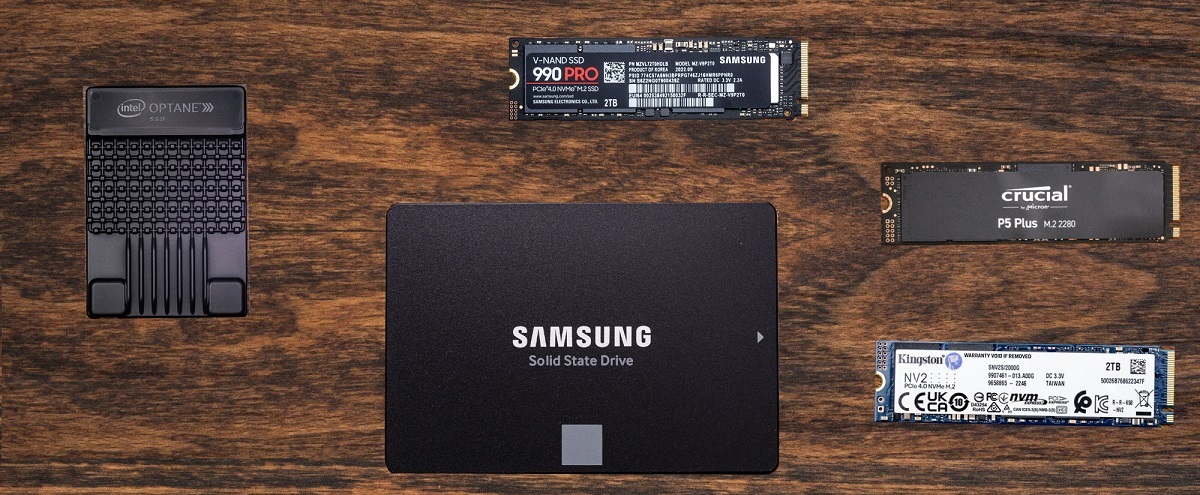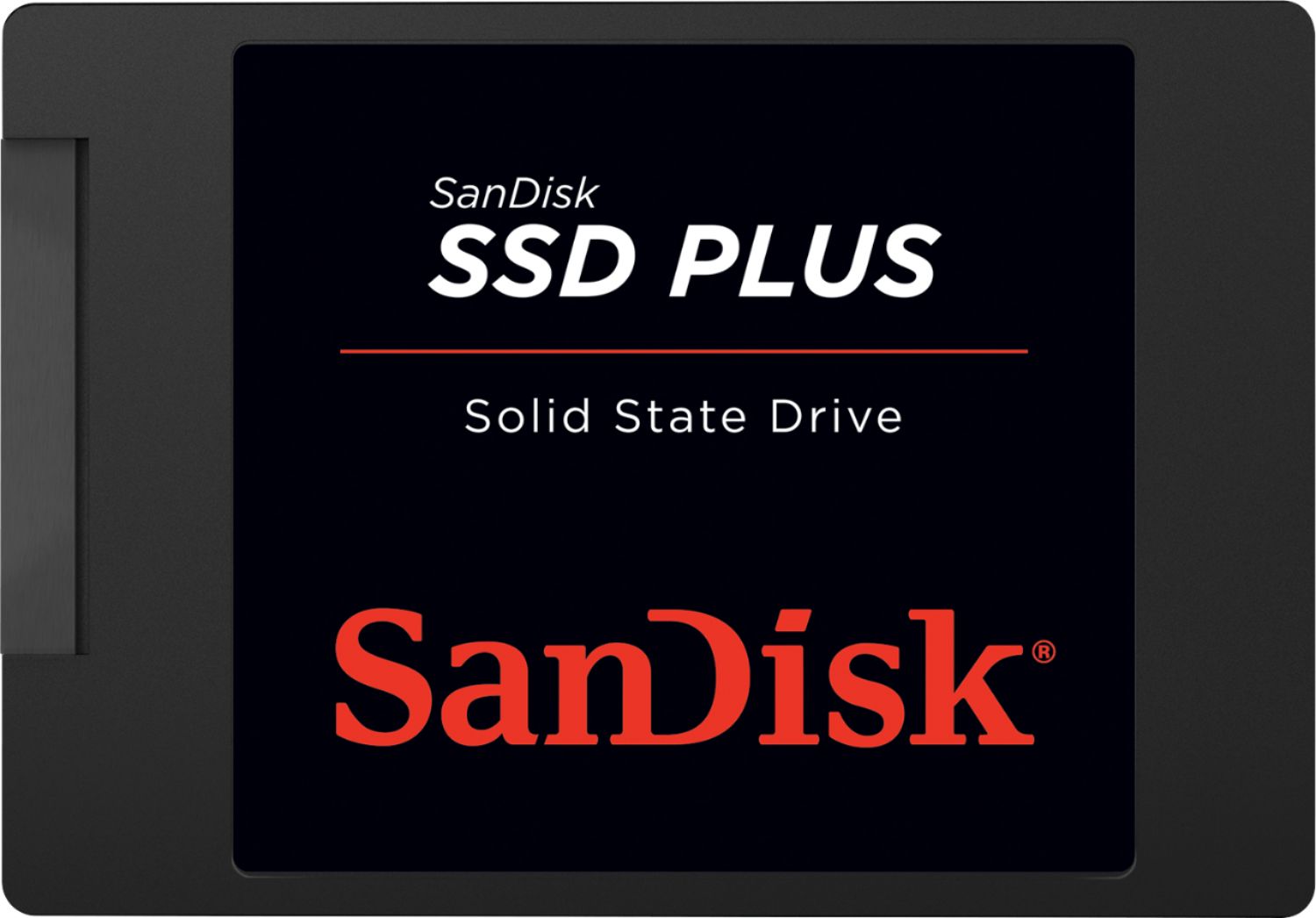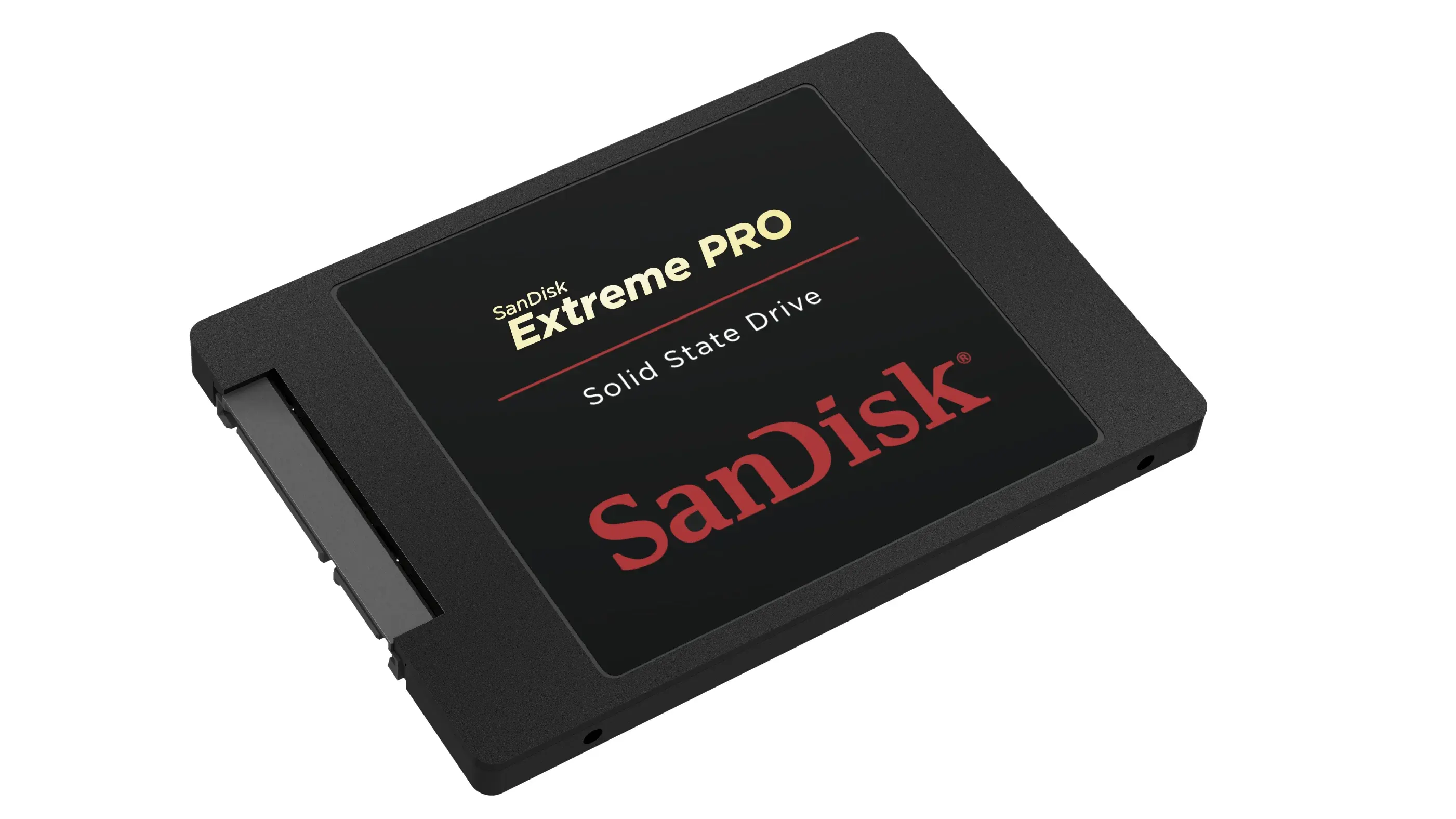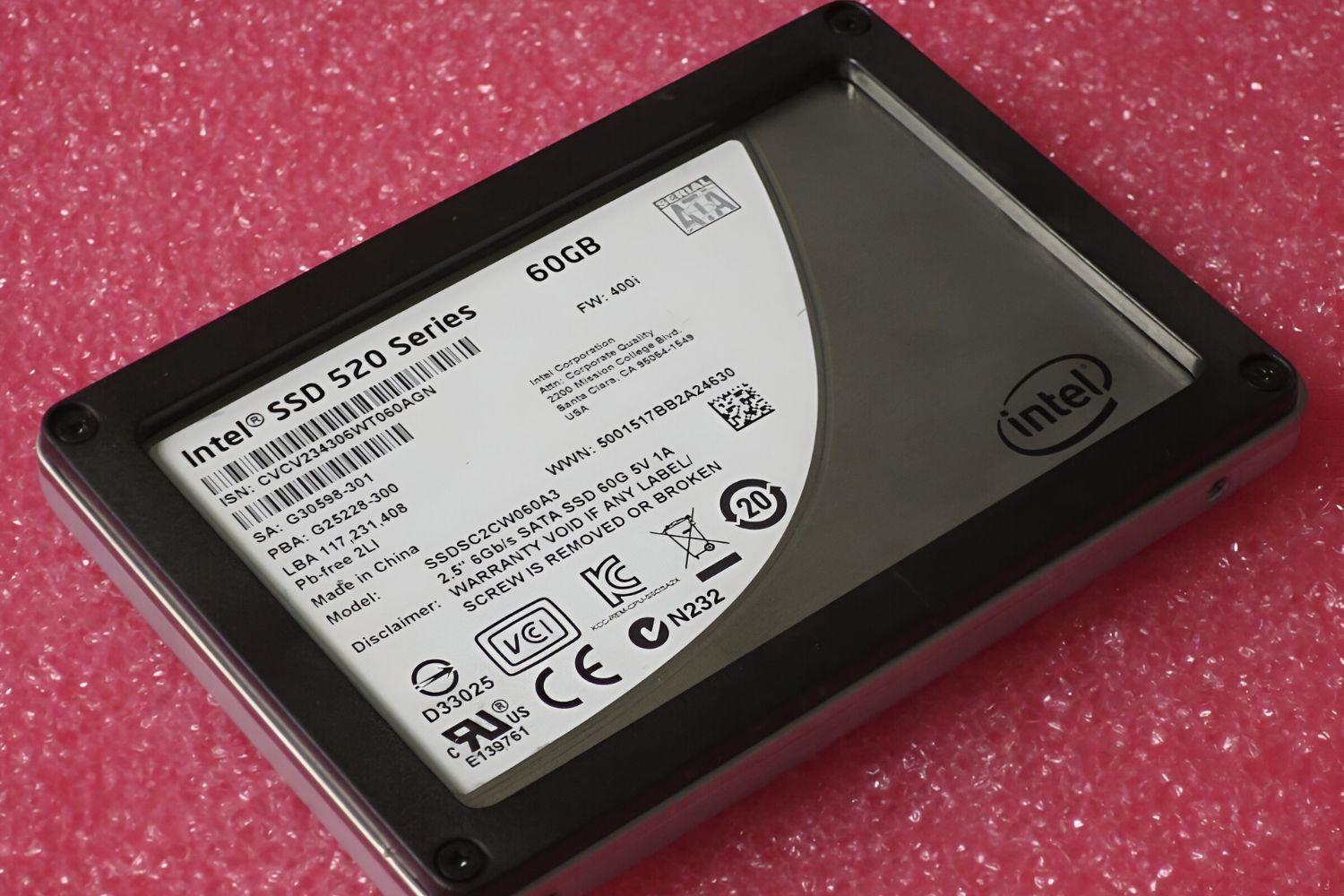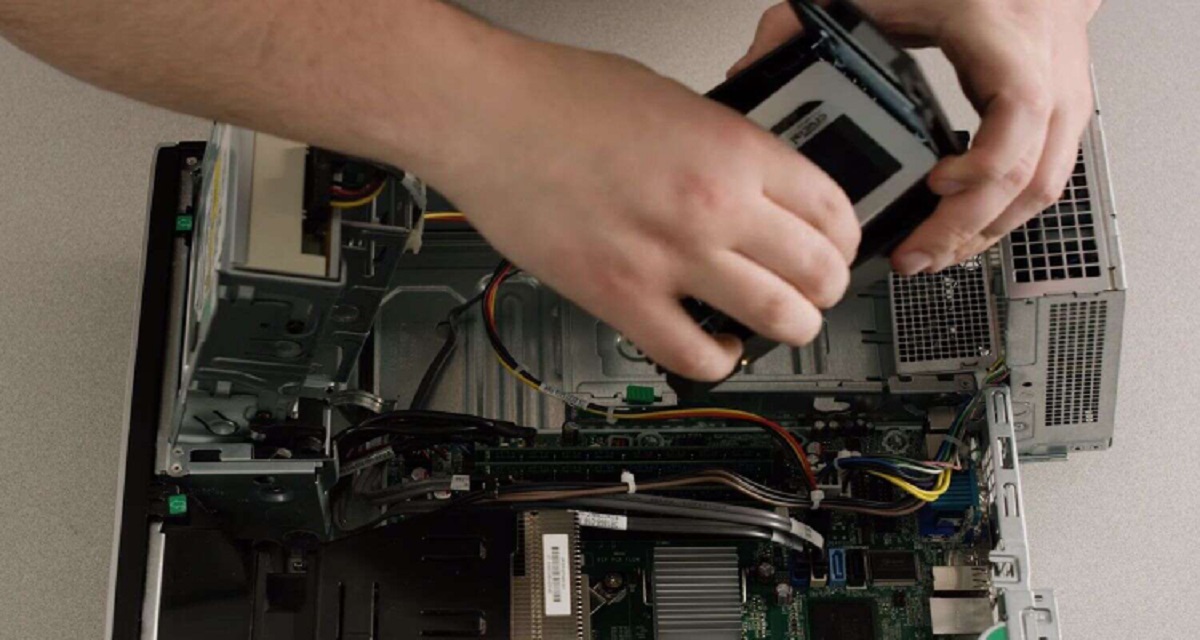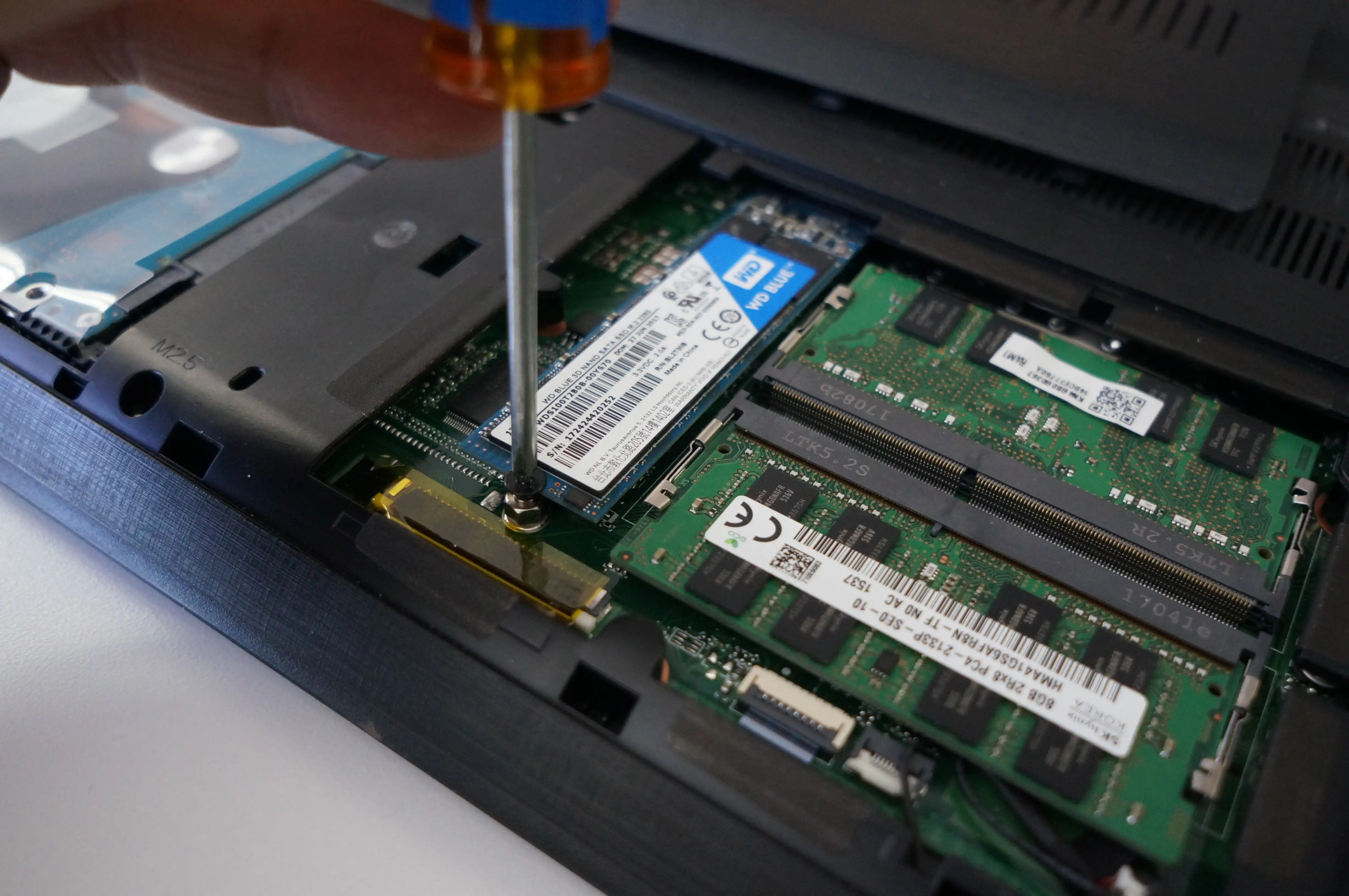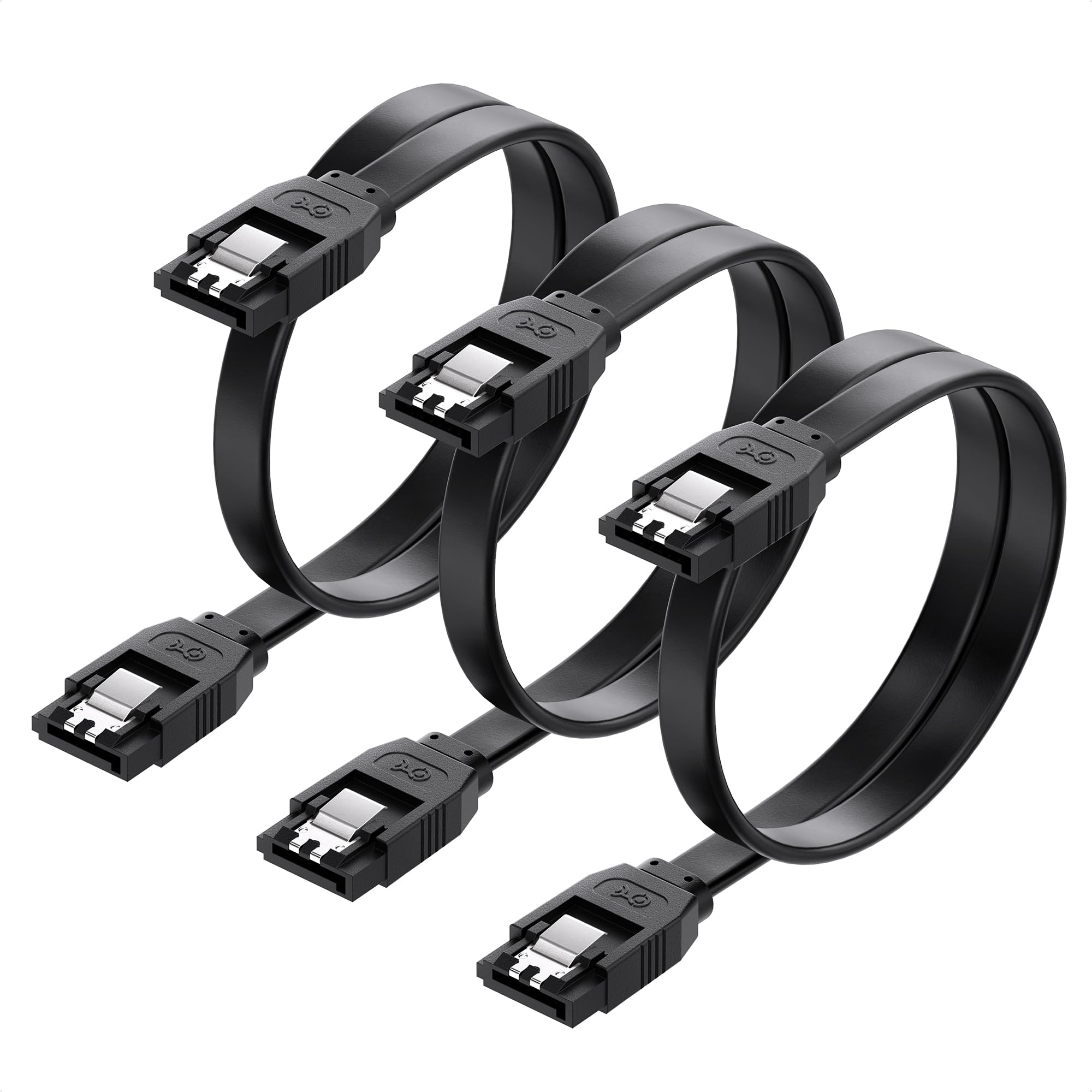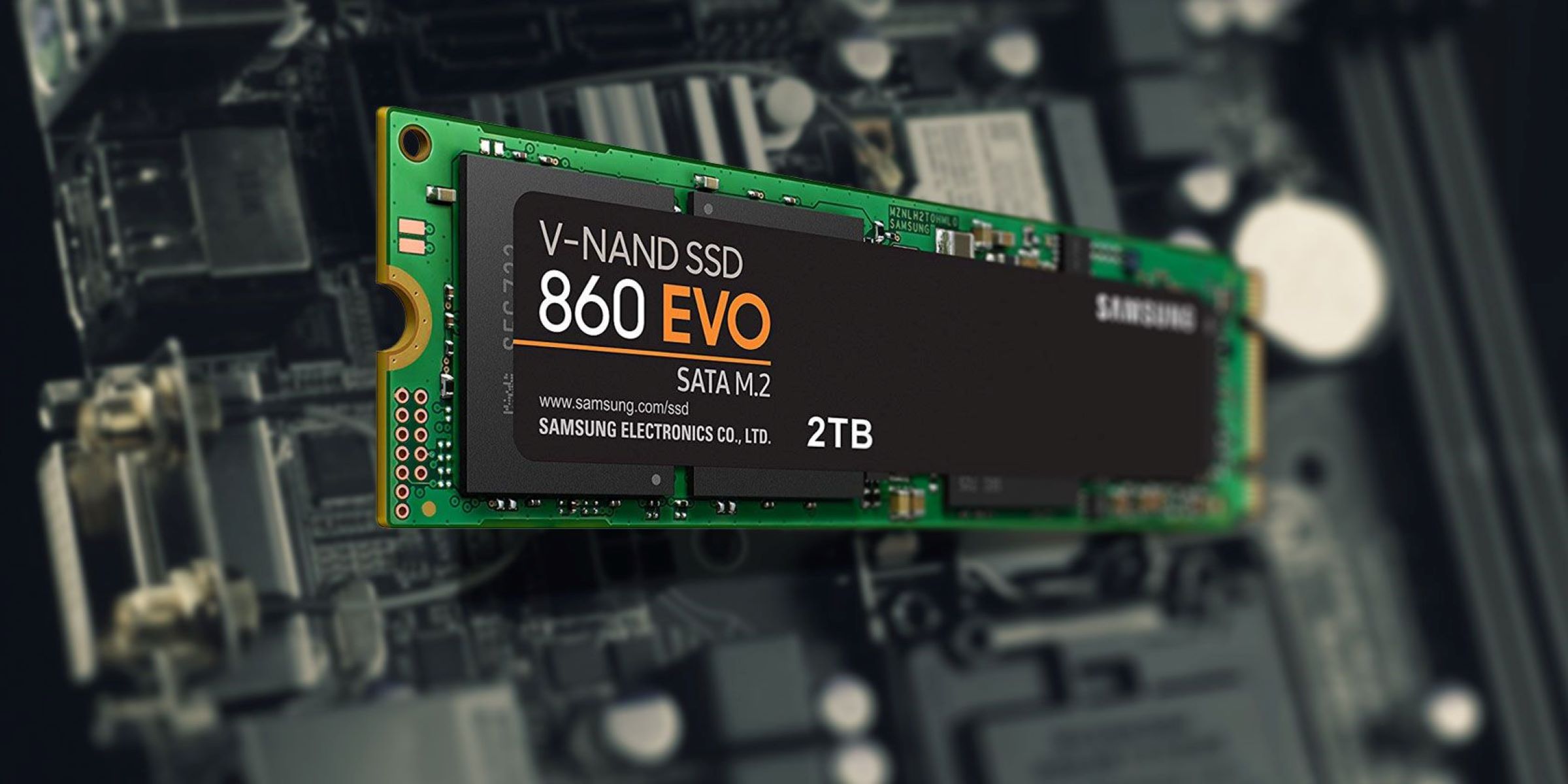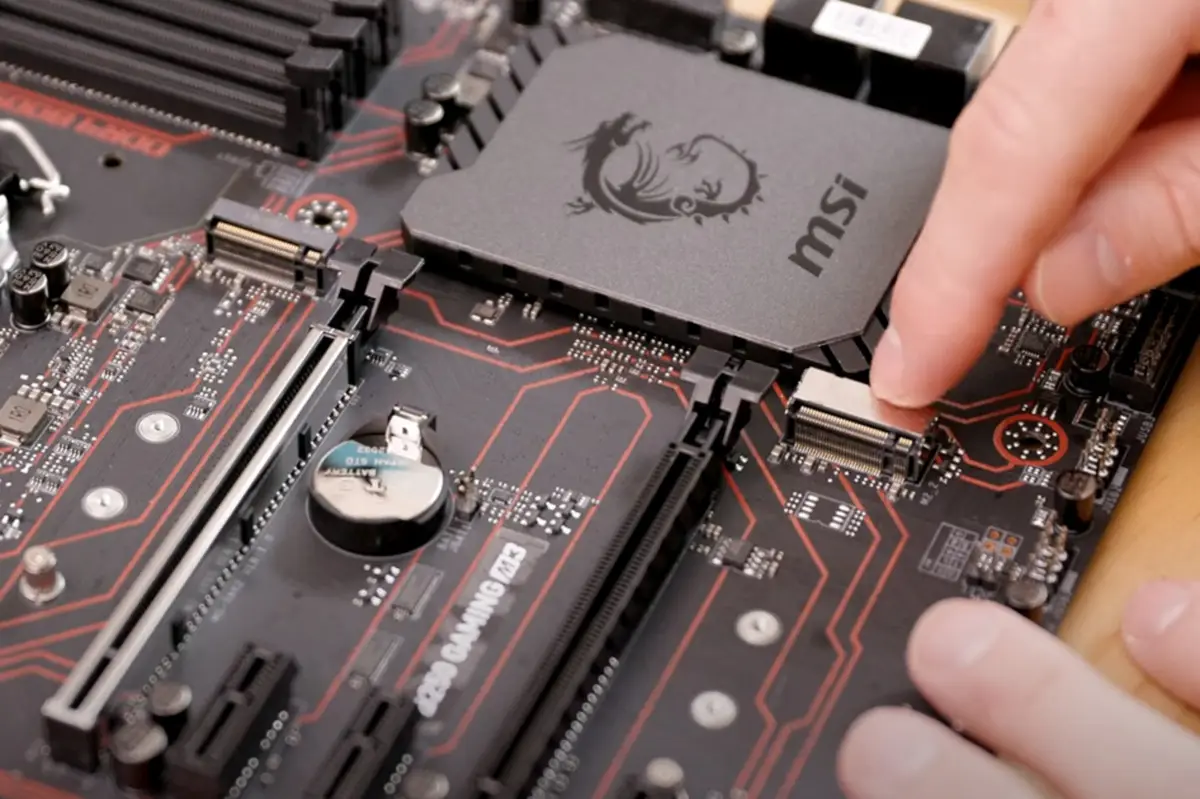Introduction
When it comes to choosing the right type of storage for your computer or laptop, you may have come across the terms SSD and SATA. Both SSD (Solid State Drive) and SATA (Serial ATA) are popular options for storage, but they have distinct differences when it comes to speed, performance, storage capacity, durability, power consumption, and price.
SSD is a type of storage device that relies on flash memory to store and retrieve data. It has gained popularity in recent years due to its faster speeds and improved overall performance compared to traditional hard drives.
SATA, on the other hand, is a data transfer interface that connects the storage device to the computer’s motherboard. It has been widely used for many years and is commonly associated with traditional hard drives.
In this article, we will compare SSD and SATA in terms of speed and performance, storage capacity, durability and reliability, power consumption, compatibility, and price. By understanding the differences between these two storage options, you can make an informed decision about which one suits your needs best.
What is an SSD?
An SSD, or Solid State Drive, is a type of storage device that is designed to replace traditional hard drives in computers and laptops. Unlike hard drives, which use spinning disks and mechanical components to read and write data, SSDs rely on flash memory to store information.
Flash memory is a type of non-volatile memory that retains data even when the power is turned off. This allows SSDs to offer faster access times, improved overall performance, and greater durability compared to hard drives.
One of the main advantages of SSDs is their speed. Since there are no moving parts involved in the data retrieval process, SSDs can read and write data much faster than traditional hard drives. This leads to significantly reduced boot times, faster file transfers, and improved overall system responsiveness.
In addition to speed, SSDs also offer benefits in terms of reliability and durability. Since they don’t have any moving parts, there is less risk of mechanical failure or data loss due to physical damage. This makes SSDs more resistant to shock, vibration, and temperature fluctuations, making them ideal for mobile devices and laptops.
SSDs also have a longer lifespan compared to traditional hard drives. While hard drives can wear out and fail over time due to the mechanical wear and tear, SSDs can withstand a higher number of read and write cycles before any degradation occurs.
Furthermore, SSDs are typically smaller and lighter than hard drives, making them ideal for compact devices such as ultrabooks and tablets. They also generate less heat, consume less power, and produce less noise compared to hard drives.
Overall, SSDs offer significant advantages over traditional hard drives in terms of speed, performance, durability, and power consumption. With these benefits in mind, many users are opting for SSDs to enhance their computing experience and improve the overall performance of their systems.
What is SATA?
SATA, or Serial ATA, is a data transfer interface that connects storage devices, such as hard drives and optical drives, to a computer’s motherboard. It is a standard technology that has been widely used for many years in personal computers and laptops.
SATA interfaces are designed to replace older parallel ATA (PATA) interfaces, also known as IDE (Integrated Drive Electronics). Compared to IDE interfaces, SATA offers several advantages in terms of data transfer speed, cable management, and compatibility.
One of the main advantages of SATA is its improved data transfer rate. SATA interfaces support higher transfer speeds, allowing for faster data access and improved overall system performance compared to IDE interfaces. This is especially important when working with large files or running resource-intensive applications.
SATA also offers better cable management. Unlike IDE interfaces that require bulky ribbon cables, SATA interfaces use smaller and more flexible cables. This allows for easier cable routing and improved airflow within the computer case, promoting better cooling and reducing the risk of cable clutter.
Another benefit of SATA is its backward compatibility. Most modern motherboards and storage devices support both SATA and older IDE/PATA interfaces. This means that users can easily upgrade their systems to SATA without having to replace all of their existing storage devices. They can simply connect SATA devices to the SATA ports while still being able to use their older IDE devices if needed.
SATA interfaces also offer hot-plugging capability, which allows users to connect or disconnect SATA devices while the computer is running. This provides convenience and flexibility when it comes to adding or removing storage devices without the need for restarting the system.
It’s important to note that while SATA is commonly associated with traditional hard drives, it can also be used with other storage technologies such as solid-state drives (SSDs) and optical drives. This allows users to take advantage of SATA’s benefits regardless of the type of storage device they choose to use.
In summary, SATA is a widely adopted data transfer interface that offers faster speeds, improved cable management, and backward compatibility. Whether you are using traditional hard drives, SSDs, or optical drives, SATA provides a reliable and efficient way to connect storage devices to your computer.
Speed and Performance
When it comes to speed and performance, SSDs have a clear advantage over SATA drives. SSDs utilize flash memory technology, allowing for much faster data read and write speeds compared to traditional SATA drives.
Due to the absence of mechanical moving parts, SSDs can achieve near-instantaneous data access times and deliver seamless performance. This translates into faster boot times, quicker application launches, and enhanced overall system responsiveness.
In contrast, SATA drives have spinning disks and mechanical components, which inherently introduce latency and slower data transfer rates. While SATA drives have improved over time with advancements in technology, they still can’t match the speed and performance of SSDs.
For tasks such as transferring large files, performing complex calculations, and running resource-intensive applications like video editing or gaming, SSDs offer a significant advantage in terms of speed and performance. Users can experience faster data processing, reduced load times, and smoother multitasking with an SSD-equipped system.
However, it’s worth noting that in everyday tasks like web browsing, word processing, and light usage, the difference in speed between an SSD and a SATA drive might not be as noticeable. So, if you primarily use your computer for basic tasks, a SATA drive should still provide an acceptable level of performance at a more affordable price.
Ultimately, if speed and performance are a top priority for you, investing in an SSD is the way to go. It can greatly enhance your computing experience, particularly when handling demanding tasks or running resource-intensive applications.
Storage Capacity
When it comes to storage capacity, both SSDs and SATA drives offer a range of options to accommodate different storage needs.
SATA drives are available in larger capacities compared to most consumer-grade SSDs. It is not uncommon to find SATA drives with storage capacities of 1TB, 2TB, or even higher. This makes them a suitable choice for those who require large amounts of storage space, such as professionals working with multimedia files or individuals who have extensive media libraries.
On the other hand, the storage capacity of SSDs has been growing steadily over the years, and it is now possible to find consumer-grade SSDs with capacities ranging from 256GB to 4TB or more. While SSDs may have smaller maximum capacities compared to SATA drives, they still offer ample storage space for most average users. Keep in mind that larger capacity SSDs tend to be more expensive, so it is important to consider your storage needs and budget when making a decision.
It’s important to note that the usable storage capacity of both SSDs and SATA drives may be slightly less than the advertised capacity due to formatting and system overhead. Additionally, some SSDs reserve a portion of their storage for overprovisioning, which helps maintain performance and extend the lifespan of the drive.
When choosing between SSDs and SATA drives in terms of storage capacity, it is essential to consider your specific requirements. If you need a large amount of storage space at an affordable price, a SATA drive is a good option. However, if you prioritize speed and performance and can make do with a slightly smaller capacity, an SSD is a worthy investment.
Durability and Reliability
When comparing durability and reliability, SSDs have the upper hand over SATA drives due to their design and technology.
SSDs are more durable and less prone to mechanical failures because they do not have any moving parts. Traditional SATA drives, on the other hand, have spinning disks and mechanical components that can wear out over time, leading to potential failures and data loss.
SSDs are more resistant to physical shocks, vibrations, and temperature fluctuations, making them ideal for laptops, portable devices, and environments where accidental drops or rough handling may occur. This makes SSDs a more reliable storage option for individuals who need their data to be intact and accessible even in challenging conditions.
Furthermore, SSDs have a longer lifespan compared to SATA drives. The flash memory cells used in SSDs can handle a higher number of read and write cycles before any degradation occurs. This means that SSDs can retain their performance and reliability for a longer period, even with continuous data access and frequent data transfers.
On the other hand, SATA drives are more susceptible to wear and tear over time, as the mechanical components gradually degrade with regular use. This can lead to performance degradation and eventual drive failure. However, it is important to note that SATA drives can still provide reliable performance for many years if properly maintained and used within their intended lifespan.
In terms of data integrity and protection, both SSDs and SATA drives have mechanisms in place to ensure data reliability. Both types of drives use error correction algorithms and wear-leveling techniques to prevent data corruption and extend the lifespan of the drive.
Ultimately, if durability and reliability are critical factors for your storage needs, SSDs are the recommended choice. Their solid-state design, absence of mechanical parts, and resistance to physical shocks make them a more reliable option overall.
Power Consumption
When it comes to power consumption, SSDs have a significant advantage over SATA drives. SSDs are known for their low power usage, making them more energy-efficient compared to traditional SATA drives.
The absence of mechanical components in SSDs means that they do not require power to spin disks or move read/write heads, resulting in lower power consumption. This makes SSDs particularly desirable for laptops, as they can help extend battery life and improve overall energy efficiency.
On the other hand, SATA drives consume more power due to the need to power and spin the disks, as well as move the read/write heads to access and write data. While the power consumption of SATA drives has improved over the years, they still consume more energy compared to SSDs.
In addition to the overall power consumption, SSDs also offer faster performance during low-power states, such as idle or standby modes. This allows the system to resume from sleep or hibernation more quickly, reducing the time required for the computer to become operational and saving additional power in the process.
It’s worth noting that the specific power consumption of SSDs and SATA drives can vary depending on the model, capacity, and operation. Different SSDs and SATA drives may have different power requirements, so it’s important to refer to the specifications provided by the manufacturer for accurate power consumption information.
Generally speaking, if you are concerned about power efficiency and want to reduce your energy consumption, SSDs are the better choice. They not only consume less power during regular operations but also offer faster startup times and better power management features.
However, it’s important to consider that power consumption alone should not be the sole factor in your decision-making process. Other factors such as performance, storage capacity, and cost should also be taken into account to ensure that you choose the best storage solution that meets your specific needs.
Compatibility
When it comes to compatibility, SATA drives have the advantage of being more widely supported and compatible with various systems and devices.
SATA interfaces have been the standard for connecting storage devices to motherboards for many years. This wide adoption has resulted in SATA being supported by almost all modern desktop computers, laptops, and even external storage devices.
With SATA drives, you have the flexibility to connect them to different systems and devices without compatibility issues. Whether you want to upgrade your desktop computer, replace the internal drive on your laptop, or use an external SATA drive for backup purposes, the chances of compatibility problems are relatively low.
On the other hand, SSDs that are not specifically designed to be compatible with SATA might require different interfaces, such as M.2 or NVMe, to connect to the motherboard. While these newer interfaces offer faster data transfer speeds, they may not be supported by older systems or require additional adapters or special motherboard support.
It’s important to note that compatibility also depends on the operating system. Fortunately, both SATA drives and SSDs are generally compatible with major operating systems such as Windows, macOS, and Linux. This means that you can use either type of storage device with confidence, regardless of your preferred operating system.
When choosing between SATA drives and SSDs in terms of compatibility, the decision can depend on the system or device you plan to use. If you need a storage solution that offers broad compatibility and can be easily integrated into various systems, SATA drives are a safe choice. However, if you have a newer system or are willing to ensure compatibility with the necessary hardware and software support, SSDs can provide enhanced performance and other benefits.
Price
When it comes to price, SATA drives have a clear advantage over SSDs. SATA drives are generally more affordable and offer a lower cost-per-gigabyte compared to SSDs.
The lower cost of SATA drives can be attributed to their mature technology and widespread availability. Since SATA drives have been around for a long time and are produced in larger quantities, the economies of scale come into play, resulting in lower production costs and ultimately more affordable prices for consumers.
On the other hand, SSDs are typically more expensive than SATA drives, especially when it comes to higher-capacity models. The cost of flash memory, which is the crucial component of SSDs, is still relatively higher compared to traditional spinning disk technology used in SATA drives.
However, it’s important to consider the price difference in the context of the overall value and benefits that SSDs offer. While SSDs may have a higher upfront cost, they provide significant performance improvements, faster data access, and enhanced durability and reliability compared to SATA drives. For users who prioritize speed and performance, the investment in an SSD can be well worth it.
Additionally, the price of SSDs has been gradually decreasing over time as the technology matures and becomes more widely adopted. This means that the price difference between SATA and SSD drives continues to narrow, making SSDs more affordable and accessible for a broader range of users.
Ultimately, when considering the price, it’s crucial to strike a balance between your budget and your storage needs. If you have a tight budget and require a large amount of storage space, a SATA drive may be the more cost-effective choice. However, if you value performance, durability, and faster data access, investing in an SSD can provide a notable increase in overall system performance.
Conclusion
Both SSDs and SATA drives have their own distinct advantages and considerations. It’s important to assess your specific needs and priorities in order to make an informed decision on which storage option is best for you.
If speed and performance are your top priorities, SSDs are the clear winner. They offer faster data access times, quicker boot-up speeds, and improved overall system responsiveness. Additionally, their durability, reliability, and lower power consumption make them ideal for portable devices and demanding applications.
On the other hand, if you require larger storage capacities at a more affordable price, SATA drives are a viable option. They offer a range of large-capacity drives suitable for users with extensive media libraries, professionals working with multimedia files, or those on a tight budget.
Both SSDs and SATA drives have their place in the market, and it ultimately comes down to personal preference and specific use cases. Some users may prioritize the speed and performance offered by SSDs, while others may opt for the affordability and larger storage capacities of SATA drives.
It’s worth noting that as technology advances and prices continue to evolve, the gap between SSDs and SATA drives is narrowing. SSDs are becoming more affordable, while SATA drives are incorporating faster speeds and improved features. This trend gives users more options and flexibility when choosing their storage solutions.
In summary, SSDs offer superior speed, performance, durability, and lower power consumption, making them the ideal choice for those seeking optimal performance. On the other hand, SATA drives provide larger storage capacities at more affordable prices, making them suitable for budget-conscious users or those with high storage demands.
Consider your specific needs, budget, and priorities when deciding between SSDs and SATA drives, and weigh the trade-offs between speed, capacity, durability, and cost. This will help you make the right choice and ensure that your storage solution aligns perfectly with your requirements and enhances your overall computing experience.







